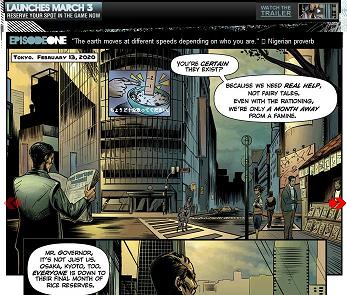Jane McGonial, a game designer and a presenter on TED, visited U of Toronto and presented her work, How we can harness the power of video games to solve real-world problems. She made an interesting argument and shared various interesting examples of games that help us individually and collectively.
In her presentation, she argued that (1) games have unnecessary obstacles that people want to tackle (and therefore people are immersed in games) and that (2) the real world is too easy and too simple compared to the game world (and therefore people do not pay attention to the real-world problems). When the real-world problems have the elements of games, she expected, people would put their strengths to better use and challenge the real-world obstacles.
She began with two games that help people achieve individual goals. For example, Nike+ helps people work out more and Foursquare helps people interact more. More interesting examples came from a series of games that tackle real-world issues. The first example is Groundcrew. People play this game and help the farmers in their neighborhood.
The second and the most interesting example was Urgent Evoke. This is an online reality game that the World Bank Institute and infoDev launched in the early 2010 to support social innovation among young people. In this game, players become superheroes, set up their own superhero teams, and choose one of missions such as water crisis and food security.
Her examples of the bright side of games continued to cooperative websites in which game players solve puzzles for science! (Foldit) or even design RNA for scientists! (EteRNA).
***
Reference
Piao, S., & Joo, J. (2022). A Behavioral Strategy to Nudge Young Adults to Adopt In-Person Counseling: Gamification. Behavioral Sciences, 12(2), 40.
Mental illness has always been an important issue for young adults. Moreover, initiatives resulting from the outbreak of COVID‐19 have had an even greater impact on the mental health of young adults. This study sought to examine the effect of gamification on whether young adults adopt in‐person counseling. One hundred twenty young adults (42 males and 78 females) with an average age of 29 years participated in our experiment. In the experiment, a 2 (Gamification: no vs. yes) × 2 (Vividness: low vs. high) between‐subjects design was employed. In the “yes” gamification condition, participants decided whether or not to read introductory material about in‐person counseling, and also whether or not to adopt in‐person counseling in the future. The results of the study show that: (1) gamification increased adoption, (2) participants’ perception of subjective usability of in‐person counseling mediated the effect of gamification to adoption, and (3) vividness of presentation moderated subjective usability. Our study demonstrated that gamification nudges young adults to adopt in‐person counseling while subjective usability mediates the relationship, and vividness moderates the relationship between gamification and subjective usability. Our findings provide counselors fresh insights into motivating people to access counseling services.



Foldit is very interesting in the way that the game players are attributed as coauthors of the scientific publication in Nature in the end. I think it is a great example of connecting virtual world game play to the real world activities.
I was also interested in the concept of “gamification” during the speech. Jane said she doesn’t like using it too much because the concept itself seems quite contrived. While lots of media producers are trying to incorporate gaming tools and interfaces to make their projects more engaging, not many of them have core activities or real motivation.
Thank you for your great addition. In general, she has an interesting idea that implementing obstacles can transform a boring problem into an enjoyable problem.